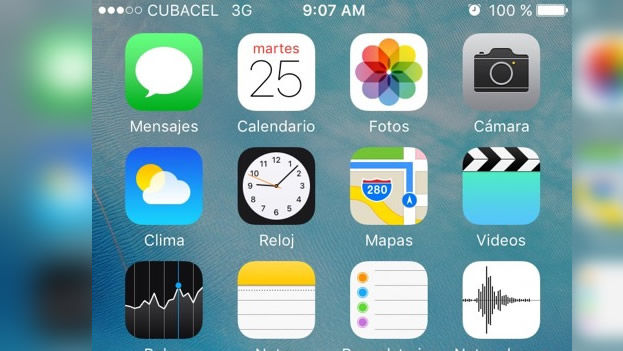
Prepaid users in the capital are now experiencing a substantial improvement in Nauta’s e-mail service on their mobile phone, a relief after three years since the creation of this product, which has been a frequent target of criticism and complaints about its instability and slowness.
“I opened my mailbox and: abracadabra! I got all the messages at once,” a young high school student tells 14ymedio in amazement while standing in line on Tuesday to buy recharge cards at the ETECSA office on the lower level of the Focsa building.
The days are long gone when only resident foreigners and tourists could contract for mobile phone service in Cuba. One of the first measures implemented by Raul Castro when he assumed the presidency in 2008 was to allow nationals to contract for prepaid cellphone service.
“Having the internet on your cellphone is normal for most people in the world, but here it seems like a dream“
Since then, more than four million customers of the state monopoly have been looking forward to connecting to the internet through their mobiles. Enabling 3G coverage has set off speculation about the imminent arrival of that service to cellphones.
“They can’t wait any longer, because having the internet on your cellphone is normal for most people in the world, but here it seems like a dream,” complains Rodobaldo, an industrial engineer, 42, who travels frequently to Panama. “As soon as I get there and install my Panamanian SIM card I can surf and receive emails, but when I return to Cuba my phone doesn’t have that capability.”
In Latin America, 3G has given way to 4G, which has been available for years. Uruguay has this network in 84% of its territory, Bolivia in 67%, Peru in 61% and Mexico in 60%, according to data from the International Telecommunication Union (ITU). However, in Cuba having this functionality on the mobile network still seems like a science fiction movie.
Rodobaldo is hopeful that ETECSA will soon offer packages to connect to the web from cell phones. Recently there was the first pilot project to bring internet to some 700 families (of the 2,000 initially planned) through in-home ADSL in Old Havana, but the users complain about the high prices: according to the bandwidth chosen it cost between 30 and 70 pesos for 30 hours.
“Every day there are more foreign companies offering packages so that tourists who come to the island can surf the internet from their own cellphone accounts,” an official of the state company, who preferred to remain anonymous,told this newspaper. “We have roaming agreements in more than 150 countries,” he says.
Following the beginning of the diplomatic thaw between Washington and Havana, announced on 17 December 2014, Barack Obama’s administration authorized US telecommunications companies to operate in Cuba.
Verizon took the first step and offered services to its users visiting the Island, and was later joined by Sprint, T-Mobile and AT&T. However, the prices of browsing from one of these phones during a stay in Cuba are still very high, averaging about $2.05 per megabyte.
Surfing the web from a US cellphone is possible in Cuba, but it runs about $2.05 per Megabyte
Until the implementation of 3G, roaming services sent and received emails via Nauta and text messages using the General Packet Radio Service (GPRS) connection, an enriched Global System for Mobile (GMS) communications.
Now, to be able to take advantage of 3G in Cuba, “the customer must have 3G coverage on their cellphone with the WCDMA standard on the 900 MHz frequency, which is the international standard in several European and Latin American countries,” Luis Manuel Díaz, ETECSA’s Director of Institutional Communications told the official press.
Phones that technically do not have the ability to access the new network will continue to use the 2G that “coexists without difficulty,” the company’s representative told the official newspaper Granma.
A marketing specialist for the state monopoly, Óscar López Díaz, goes further and in addition to highlighting the improvement in the connection speed for the use of the Nauta mail brought by 3G service, he believes that its arrival will enable ” future access to other services such as the Internet on phones.”

No comments:
Post a Comment